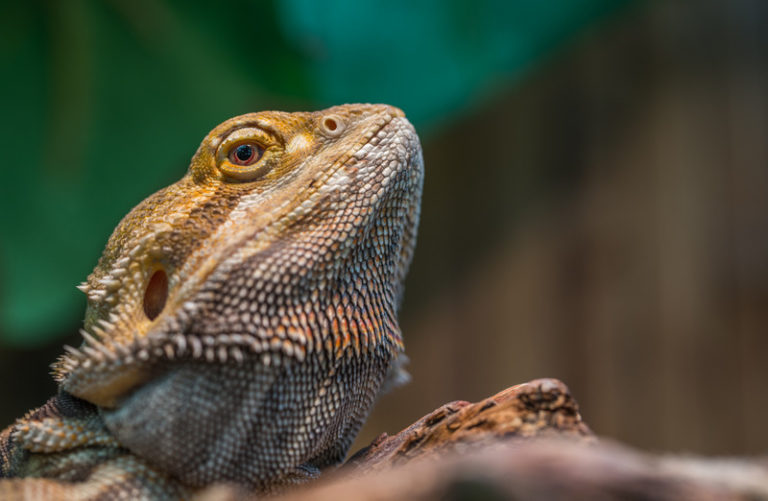If you’ve ever owned a bearded dragon, you know they are a very fun and personable pet. Their shiny exteriors and booming personalities are just what the doctor ordered if you want to fill your home with a bit more life. You’ll enjoy them so much that you may begin to neglect other things in your life – especially your skin.
Though bearded dragons make great pets, only special precautions can help you enjoy their entertaining antics without having to endure an uncomfortable rash from your newest pet.
But don’t stress out, this blog post is going to answer all your questions!
Table of Contents
- Is bearded dragons’ skin poisonous?
- Can a person be allergic to a bearded dragon?
- Can you get a rash from a bearded dragon?
- What should you do if you get a rash from a bearded dragon?
- FAQs
Is bearded dragons’ skin poisonous?
Bearded dragons are omnivores, which means they’ll eat both plant and animal material. One of the things bearded dragons eat is ant and termite larvae. The larvae produce formic acid as a defence mechanism, which is the chemical that gives fire ants their name.
Bearded dragons have small pockets on their skin called cloacal glands. When threatened, they can squeeze their muscles to squirt formic acid from these glands.
It’s not enough to kill a person, but it can cause skin irritation if allowed to come in contact with human skin. It’s also very stinky and can irritate dogs or cats if it comes in contact with their eyes or noses.
The only really dangerous thing about bearded dragon skin is the possibility of infection if you’re bitten by one, but this is rare and a reptile-savvy veterinarian should be able to treat it easily.
Also read: Where can I sell my bearded dragon?
Can a person be allergic to a bearded dragon?
It’s possible to be allergic to any pet, including a bearded dragon. For example, some people are allergic to bird feathers and thus can’t own birds. But you don’t have to give up your pet just because you’re allergic. For example, many people with cat allergies can own cats by taking antihistamines or using air purifiers.
If you’re concerned about your allergies, the only way to know for sure whether you can own a bearded dragon is to get one and see what happens. If you’re worried about allergies but still want to get a beardie, you might consider getting a juvenile so you don’t spend too much money on a pet that may not work out for you.
Whether someone is allergic or not depends on several factors, including the animal’s species and diet and environmental conditions (e.g., humidity). If someone is allergic to one kind of bearded dragon, it doesn’t necessarily mean they’ll be allergic to another.
Can you get a rash from a bearded dragon?
Yes! A bearded dragon can give you a rash through bites or scratches.
Bearded dragons enjoy being pets and they will be happy to spend time on your body. They may even climb from your hand to your arm and onto your shoulder if given the chance. These animals are usually very docile, but sometimes they can become frightened or unpredictable. When this happens, a bearded dragon may bite or scratch its owner or another person who is handling it.
If bitten or scratched, the area should be cleaned with soap and water immediately to reduce the risk of infection and to help prevent the spread of any germs that may be present in the mouth of the animal.
Although a bearded dragon bite is not likely to cause serious injury, it can still cause pain and irritation. The animal’s claws are also very sharp and can break skin easily. If you are scratched by a bearded dragon, there is a small chance that you could get an infection in the wound.
What should you do if you get a rash from a bearded dragon?
The most common injury is a bite on the hand or arm. These bites can be painful and cause bleeding. In some cases, the bleeding may not stop for several hours after the attack.
Other injuries include scratches, which can lead to infection if not properly treated; and bruising, which can result in discolouration of the skin for up to three weeks after the attack.
Some people have allergic reactions to bearded dragon saliva, which can cause rashes and hives. If you’re one of these people, you’ll need to be particularly careful when handling your pet, as even a small amount of saliva could trigger an allergic reaction.
If you’ve been bitten by a bearded dragon, immediately wash the wound with soap and water for at least five minutes. If there is blood on your clothes, change them before you go to the doctor’s office or hospital.
Your doctor will determine whether or not you need stitches based on the severity of your injury. If so, he or she will numb the area and sew it up with a sterile needle and thread.
FAQs
Can bearded dragon substrates cause rashes on humans?
Yes, bearded dragon substrates can cause rashes on human skin. Reptile substrates have been known to have bacteria and fungus in them. If a person touches the substrate and then touches their skin, it can cause a rash. The best way to prevent this is to always wash your hands after handling the substrate and your bearded dragon.
Can you get sick from touching a bearded dragon?
You can’t get sick from touching a bearded dragon. However, if you have open sores or cuts on your hands then it is possible. A bearded dragon can carry parasites and bacteria that could be harmful to humans, especially children because of their immune systems.

